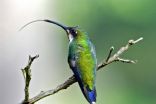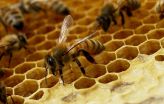(Press-News.org) Irvine, Calif., Aug. 19, 2015 -- Patients with hypertension treated with acupuncture experienced drops in their blood pressure that lasted up to a month and a half, researchers with the Susan Samueli Center for Integrative Medicine have found.
Their work is the first to scientifically confirm that this ancient Chinese practice is beneficial in treating mild to moderate hypertension, and it indicates that regular use could help people control their blood pressure and lessen their risk of stroke and heart disease.
"This clinical study is the culmination of more than a decade of bench research in this area," said Dr. John Longhurst, a University of California, Irvine cardiologist and former director of the Samueli Center. "By using Western scientific rigor to validate an ancient Eastern therapy, we feel we have integrated Chinese and Western medicine and provided a beneficial guideline for treating a disease that affects millions in the U.S."
Longhurst and his UCI colleagues Dr. Peng Li and Stephanie Tjen-A-Looi conducted tests on 65 hypertensive patients who were not receiving any hypertension medication. Separated randomly into two groups, the subjects were treated with electroacupuncture - a form of the practice that employs low-intensity electrical stimulation - at different acupoints on the body.
In one group of 33 receiving electroacupuncture on both sides of the inner wrists and slightly below each knee, the researchers found a noticeable drop in blood pressure rates in 70 percent of participants - an average of 6 to 8 mmHg for systolic blood pressure (the high number) and 4 mmHg for diastolic blood pressure (the low number). These improvements persisted for a month and a half.
Also in this group, the team identified significant declines in blood concentration levels of norepinephrine (41 percent), which constricts blood vessels and increases blood pressure and glucose levels; and renin (67 percent), an enzyme produced in the kidneys that helps control blood pressure. In addition, the electroacupuncture decreased aldosterone (22 percent), a hormone that regulates electrolytes.
No consequential blood pressure changes were found in the group of 32 who received electroacupuncture at other acupoints along the forearm and lower leg.
Although the blood pressure reductions in the first cohort were relatively small - mostly in the 4-to-13-mmHg range - the researchers noted that they were clinically meaningful and that the technique could be especially useful in treating systolic hypertension in patients over 60.
"Because electroacupuncture decreases both peak and average systolic blood pressure over 24 hours, this therapy may decrease the risk for stroke, peripheral artery disease, heart failure and myocardial infarction in hypertensive patients," Longhurst said.
INFORMATION:
Participants were treated at UCI's Institute for Clinical & Translational Science. Study results appear in Medical Acupuncture.
Dr. Dongmei Liu and Jeannette Painovich of UCI, Dr. Ling Cheng of Shanghai's East Hospital, and Sivarama Vinjamury of the Southern California University of Health Sciences in Whittier, Calif., contributed to the study, which received support from the National Institutes of Health (grant UL1TR000153), the Adolph Coors Foundation, the Dana Foundation, the Susan Samueli Center for Integrative Medicine, and Shanghai University of Traditional Chinese Medicine.
About the University of California, Irvine: Currently celebrating its 50th anniversary, UCI is the youngest member of the prestigious Association of American Universities. The campus has produced three Nobel laureates and is known for its academic achievement, premier research, innovation and anteater mascot. Led by Chancellor Howard Gillman, UCI has more than 30,000 students and offers 192 degree programs. It's located in one of the world's safest and most economically vibrant communities and is Orange County's second-largest employer, contributing $4.8 billion annually to the local economy. For more on UCI, visit http://www.uci.edu.
Media access: Radio programs/stations may, for a fee, use an on-campus ISDN line to interview UC Irvine faculty and experts, subject to availability and university approval. For more UC Irvine news, visit news.uci.edu. Additional resources for journalists may be found at communications.uci.edu/for-journalists.
Don't look now, but the pronoun "I" is becoming obsolete.
Recent microbiological research has shown that thinking of plants and animals, including humans, as autonomous individuals is a serious over-simplification.
A series of groundbreaking studies have revealed that what we have always thought of as individuals are actually "biomolecular networks" that consist of visible hosts plus millions of invisible microbes that have a significant effect on how the host develops, the diseases it catches, how it behaves and possibly even its social interactions.
"It's a case ...
A longstanding mystery about the tiny stars that let loose powerful explosions known as Type Ia supernovae might finally be solved.
For decades, astronomers have debated whether one white dwarf star, or two, is necessary for firing up this particular kind of supernova. The answer is not merely academic. Understanding the nitty-gritty physics and diversity of Type Ia supernovae will help illuminate our study of the evolution of galaxies and the strange cosmic force known as dark energy.
"It's about understanding one of the ultimate mysteries about stars," Laura Chomiuk, ...
In a paper titled Hummingbird tongues are elastic micropumps which appears in the August 19 issue of Proceedings of the Royal Society B, Alejandro Rico Guevara and Margaret Rubega from the Department of Ecology and Evolutionary Biology and Tai-Hsi Fan from the School of Engineering, say that fluid is actually drawn into the tongue by the elastic expansion of the tongues grooves after they are squeezed flat by the beak.
Their data shows that fifty years of research describing how hummingbirds and floral nectar have coevolved will have to be reconsidered.
What is actually ...
Researchers from North Carolina State University have developed an efficient algorithm that can interpret the wheezing of patients with breathing difficulties to give medical providers information about what's happening in the lungs. The research is part of a larger, ongoing project to develop wearable smart medical sensors for monitoring, collecting and interpreting personal health data.
The work was done by Saba Emrani and Hamid Krim, researchers in the National Science Foundation Nanosystems Engineering Research Center for Advanced Self-Powered Systems of Integrated ...
CHICAGO --- Polycystic ovary syndrome (PCOS) has been passed down in many families for generations -- causing reproductive and metabolic health problems for millions of women around the world. Yet, its cause remains unknown despite more than 80 years of research since the disorder was first described in 1935.
A new Northwestern Medicine genome-wide association study of PCOS -- the first of its kind to focus on women of European ancestry -- has provided important new insights into the underlying biology of the disorder.
Using the DNA of thousands of women and genotyping ...
LAWRENCE -- Compulsory schooling laws instituted in the late 1800s and early 1900s caused more people in Northern states to marry people at their same education level and race, possibly contributing to economic inequality, according to a University of Kansas researcher's study.
Emily Rauscher, a KU assistant professor of Sociology, found no increase in assortative mating in Southern states as a result of the laws, suggesting the influence of educational expansion on marital sorting depends on context.
"It's difficult to know why the compulsory laws had different effects ...
Solo travellers don't go alone because they have to, they do it because they want to, a new Queensland University of Technology study has found.
Professor Constanza (Connie) Bianchi, from QUT Business School, said there were a growing number of people who preferred to travel alone, despite having family and friends.
She said solo travellers were choosing freedom, uncompromised fun and meeting new people over the desire to have a companion to share their experiences.
In a study published in the International Journal of Tourism Research, Professor Bianchi looked at ...
This news release is available in Japanese.
An international research team has some good news for the struggling honeybee, and the millions of people who depend on them to pollinate crops and other plants.
These valuable pollinators have faced widespread colony losses over the past decade, largely due to the spread of a predatory mite called Varroa destructor. But the bees might not be in as dire a state as it seems, according to research recently published in Nature Communications.
Researchers found a population of wild bees from around Ithaca, New York, which ...
Current international disease surveillance systems are mainly based on reports made by doctors after treatment of infected patients. As a consequence, disease-causing microorganisms and resistance bacteria have time to spread and make large population groups sick before they are detected.
There is currently only very limited information about the global occurrence and transfer of antimicrobial resistance and infectious diseases.
Researchers at the National Food Institute and DTU Systems Biology are working to develop faster methods to detect and respond to outbreaks ...
Scientists at VIB and KU Leuven have shown that blocking the PHD1 oxygen sensor hinders the activation of p53, a transcription factor that aids colorectal cancer (CRC) cells in repairing themselves and thus resisting chemotherapy. Chemotherapy resistance remains a major clinical issue in the treatment of CRC. These findings indicate that PHD1 inhibition may have valuable therapeutic potential. The study was published in the leading medical journal EMBO Molecular Medicine, which features molecular biology-driven research.
Chemotherapy remains the most widely used cancer ...

